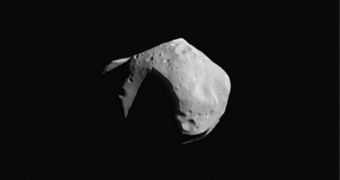According to expert, nuclear missiles and bombs may prove to be a final line of defense if our planet is to defend itself against an incoming asteroid, or other large space rock. A well-aimed strike could either break the threat apart, or nudge it off its course slightly, just enough for it to avoid hitting Earth.
This idea is not what you would call new, as it has been proposed countless times before, by both experts and science-fiction authors. Recently, his proposal got a breath of fresh air.
The team behind the new work proposes that a nuclear blast would be capable of destroying even space rocks that are considered to be large. That is to say, they will also be effective against serious threats, not only moderate ones.
But, as the team adds, in order for the attack to succeed, a missile would need to actually impact the asteroid, and not explode somewhere in its vicinity. If this happens, “it would be blown to smithereens,” explains scientist Bob Weaver, the lead author of the new study.
The expert holds an appointment at the US Department of Energy's (DOE) Los Alamos National Laboratory (LANL), in New Mexico. He made a presentation of the study on December 13, at the 2010 annual fall meeting of the American Geophysical Union (AGU).
Unlike previous attempt to seriously consider this alternative, the LANL team actually developed complex models that allowed them to investigate what would happen during such an attack.
Also, the new study took into account the latest knowledge about asteroids, which shows that not many of them are solid chunks of rocks. Most are now believed to be gravitationally-bound agglomerations of rock, which completely changes their behavior in case of an explosion.
“We know asteroids are porous. Many of them are basically rubble piles,” Weaver explains. The new simulations were carried out on an asteroid some 1,650 feet (500 meters) long. Simulation parameters were set to indicate a 25 percent porousness level.
A 500-kiloton nuclear blast was used to attack it. The model then went on to simulate the effects of an explosion taking place on the space rock's surface. The results were very encouraging.
They showed the asteroid being blown to pieces, and in such smaller chunks that they would never again aggregate to threaten our planet. Any orientation of the missile when hitting the space rock was efficient at destroying it, but especially so was attacking its short side.
“These calculations show that, even with a very porous object, a nuclear explosion can probably mitigate a potentially hazardous object,” Weaver explains.
“This is something we'd like to have in our back pocket, just in case we need it,” the expert concludes, quoted by Space.

 14 DAY TRIAL //
14 DAY TRIAL //